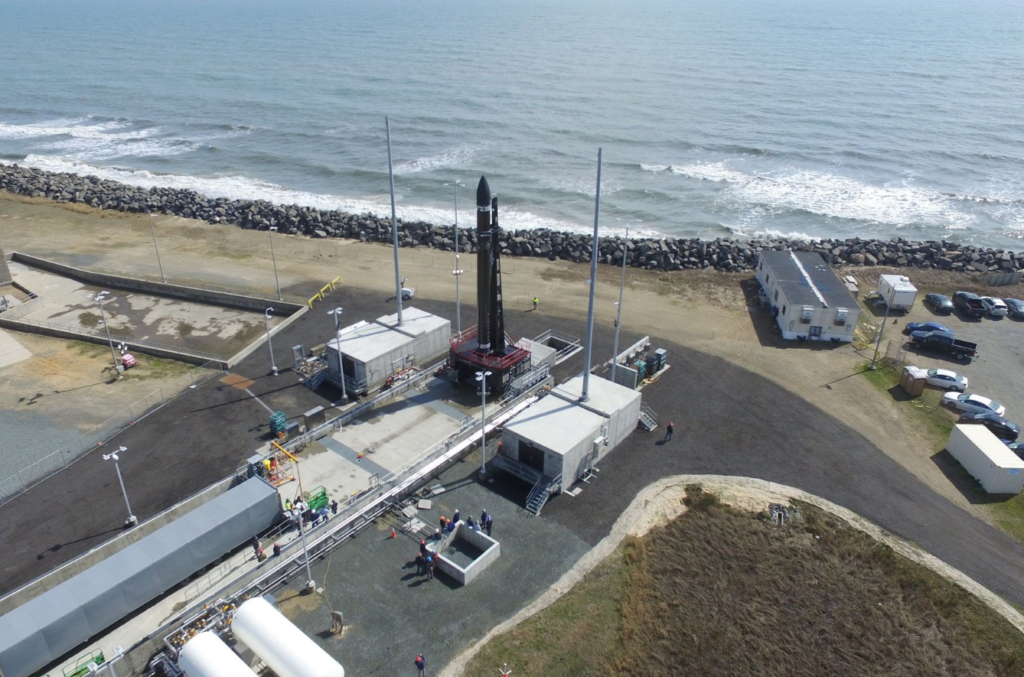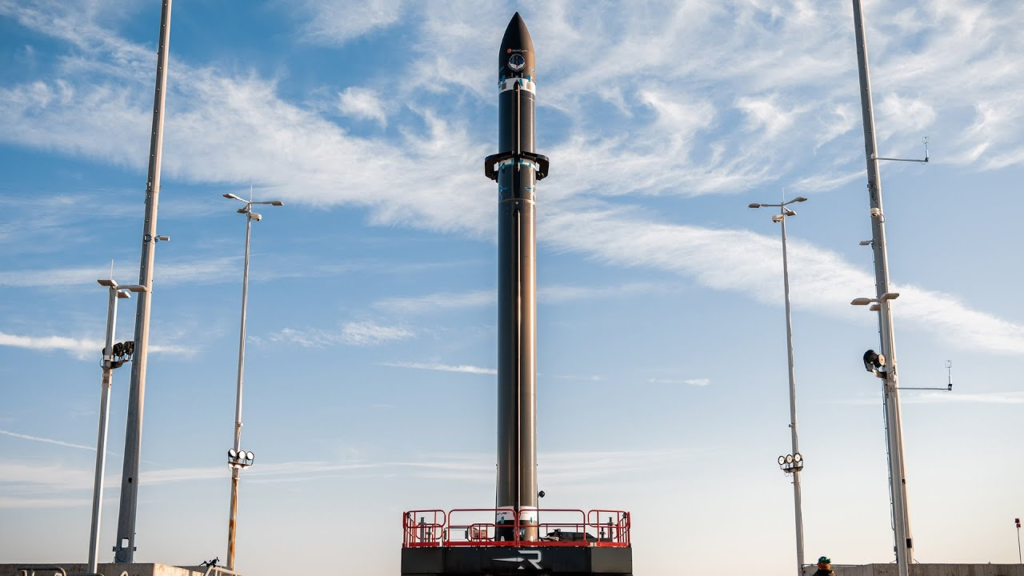
Rocket Lab’s First Ever Launch From The United States
Rocket Lab has launched many times from Launch Complex 1 in New Zealand. So much so that a second pad was added not long ago helping increase launch cadence and opportunity for Electron. Yesterday, however, Rocket Lab achieved a very significant milestone for Electron and the company with the first ever launch from the United States.
Last night we watched Electron take to the skies from Launch Complex 2. Specifically, the “Virginia is for Launch Lovers” mission was Rocket Lab’s first Electron launch from LC-2 at Virginia Space’s Mid-Atlantic Regional Spaceport within NASA’s Wallops Flight Facility. A launch pad developed to support Electron missions from U.S. soil for government and commercial customers.
While the launch complex had somewhat of a rough start and delayed use for multiple years, it’s now officially open and ready for more missions. As Rocket Lab continues to increase Electron launch cadence, the addition of another launch complex means a host of new opportunities has opened up for the company. Here I will go more in-depth into yesterday’s mission, why it took years before this launch site was used, what to expect in the future, and more.
Yesterday’s Mission

At 6 pm ET on the 24th, Electron ignited its engines and lifted off from the pad at LC-2. Soon after it began accelerating and reached Max q 1 minute and 10 seconds into the launch. 2 minutes and 30 seconds in and the first and second stages had a successful separation. With this being the first attempt from this specific site and area, plus it being nighttime, Rocket Lab did not attempt to catch or recover the booster. 3 minutes in and the fairing deployed revealing the payload and kickstage. Finally, 9 minutes and 20 seconds in, the kickstage deployed and separated from the upper stage. Only a few hours later Rocket Lab tweeted saying, “Mission success! All three payloads have been deployed. Congratulations and welcome to your new home in space, @Hawkeye360!”
By far the most significant aspect of this mission has to do with the launch site and its location. Following a site selection process in late 2018 involving multiple U.S. spaceports, Rocket Lab selected the Mid-Atlantic Regional Spaceport as the location of Launch Complex 2 due to the wide orbital inclinations the site can support, as well as the rapidly planned construction timeframe. Construction on Launch Complex 2 commenced in February 2019, with the site operational just 10 months later in December 2020. Not long after completion, Rocket Lab confirmed the inaugural mission from the site would be a dedicated flight for the U.S. Air Force scheduled in mid 2020. As we know now, this launch never happened from the site. The main reason had to do with the NASA Autonomous Flight Termination Unit (NAFTU) software. NAFTU is a command and control system available to launch vehicle providers for use at all U.S. launch ranges in ensuring public safety during launch operations.
The NAFTU system is more complicated than other, proprietary automated flight safety systems (AFSS) in that it’s designed to be customizable and support a wide array of launch vehicles at any launch range. Focusing back on Rocket Lab and this software’s impact, the company ended up getting stuck in a much longer than expected certification process that halted the launch site’s operations. Back in 2020, in regard to these delays, Peter Beck in an interview said, “There’s a very long certification process that, quite frankly, we probably underestimated how long it would take. It’s difficult to predict when the certification will be complete,” he said. “We’re 100% ready to fly other than the paperwork.” Not long after multiple errors were found that needed to be fixed. At the time, engineers said, “We expect that, under the current rate in which we’re developing and correcting the code errors, we should be ready to certify that unit in the first half of ’21.” Unfortunately, this got delayed even further, and only somewhat recently was the software and system fully certified and ready for flight. One of the reasons Rocket Lab continued to try and fix and use this software has to do with future requirements. Specifically, the NAFTU system has a mandatory requirement for Department of Defense (DOD) launches beginning in 2025.
While it’s not ideal that Rocket Lab had a practically operational site for multiple years without a launch, that has now changed. With this new capability, we can expect a significant increase in launches and even more exciting missions based out of the United States.
Electron & LC-2

Now that we know more about yesterday’s mission and Launch Complex 2’s history, we can take a closer look at the opportunities from this new site and what Rocket Lab is planning. Launch Complex 2 supplements Rocket Lab’s existing site, Launch Complex 1 in New Zealand, from which 32 Electron missions have already launched. Now with two launch complexes combined, Rocket Lab can support more than 130 launch opportunities every year, delivering unmatched flexibility for rapid, responsive launch for government and commercial satellite operators. The launch pad and production complex for Rocket Lab’s large reusable Neutron launch vehicle will also be located at the Mid-Atlantic Regional Spaceport, streamlining operations across small and large launch.
Focusing on the site itself, in addition to the launch pad, Launch Complex 2 is also home to an Integration and Control Facility located within the Wallops Research Park for processing payloads and Electron launch vehicles prior to lift-off. The ICF can house multiple Electron launch vehicles for pre-launch integration and is home to Launch Complex 2 Range Control operations, payload integrations cleanrooms, and administrative offices. Peter Beck also highlighted that “Responsive launch is the key to resilience in space and this is what Launch Complex 2 enables. All satellites are vulnerable, be it from accidental or deliberate actions. By operating a proven launch vehicle from two launch sites on opposite sides of the world, Rocket Lab delivers unmatched flexibility and responsiveness for the defense and national security community to quickly replace any disabled satellite.”
In terms of future missions, Rocket Lab is ready to make full use of this new launch complex. About one month ago the company tweeted mentioning, “The next Electron is in the queue at LC-2! We’re gearing up for a busy start to the year with back-to-back launches from @NASA_Wallops.” This means not long from now we can expect preparations to begin and the next launch happen from the same site.
NASA was also very satisfied with the launch and primarily the performance of the NAFTU software. “In taking NAFTU across the finish line, NASA has delivered an autonomous flight termination system like no other in operation today filling a critical gap in modernizing our nation’s launch ranges,” said David L. Pierce, Wallops Flight Facility director. “We’re proud to have made this and future U.S. Rocket Lab Electron launches possible with our game-changing flight safety technology.” While other, proprietary autonomous flight termination systems are in use today, NAFTU is different in that it was designed to be used by any launch provider at all U.S. launch ranges to ensure public safety during launch operations. To date, 18 companies have requested the NAFTU software through NASA’s technology transfer process. Rocket Lab was among the first applicants for the software, enabling their launch from Wallops.
They pointed out that ensuring public safety is the primary mandate of any launch range. Launches flying without automated flight safety systems rely on range safety officers to monitor all stages of rocket flight using ground-based tracking and telemetry assets. If the rocket flies off course, the range safety officers send commands to terminate the flight. Launch safety plans need to compensate for human reaction time. In contrast, an automated flight safety system, such as NAFTU, is an independent, self-contained flight termination system mounted on a rocket to make real-time flight termination decisions autonomously. This real-time decision-making capability provides many benefits, such as wider launch windows and smaller downrange safety corridors for boats and aircraft. In addition, since the unit is self-contained and mounted on the rocket, there is a significantly reduced need for ground-based tracking and telemetry systems, which reduces overall operations and maintenance costs. These savings are, in-turn, passed on to launch providers. While the slow start was by no means ideal, the system is now fully operational and Rocket Lab is ready to make use of the opportunity.
The payload on yesterday’s launch was from Hawkeye 360. They announced that its Cluster 6 next-generation satellites have successfully deployed to orbit. Communication with the satellites has been established by the company’s operations team. This is the first of three dedicated Rocket Lab USA Inc. (Nasdaq: RKLB) flights contracted by HawkEye 360. The Cluster 6 trio of satellites will be the first in the HawkEye constellation to enter an inclined orbit, boosting revisit rates over the mid-latitude regions of the globe. Once Cluster 6 achieves initial operating capability, HawkEye 360 will be able to collect RF data as frequently as once per hour anywhere on Earth, enabling the company to offer the most timely and actionable RF data and data analytics available on the market.
Conclusion
Rocket Lab just completed a major milestone with the successful launch of Electron from Launch Complex 2 in the United States. Even though the NAFTU software delayed this site’s possibilities by a few years, it’s now operational and ready to be utilized. Rocket Lab is now working toward an impressive launch cadence using three launch pads across two different complexes in different parts of the world. We will have to wait and see how it progresses and the impact it has on the space industry.